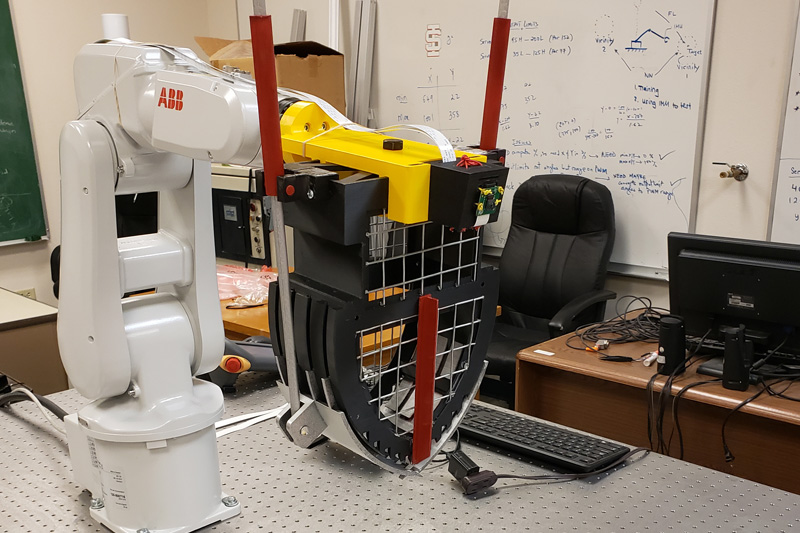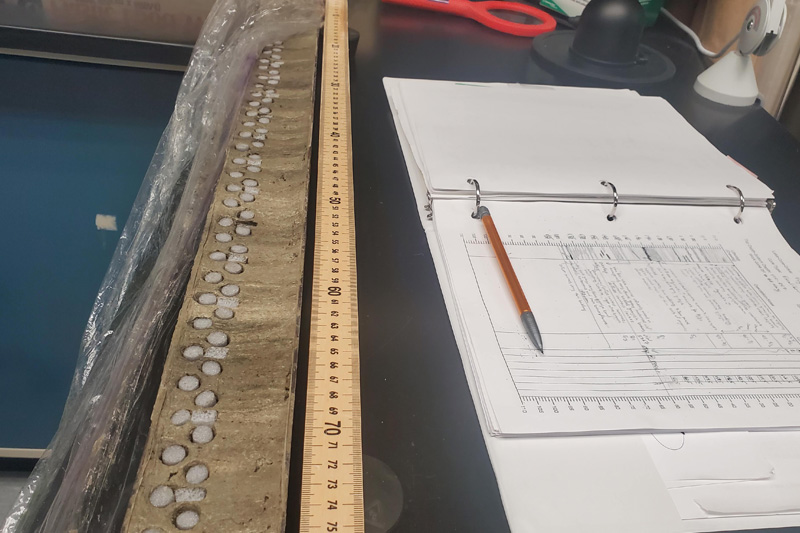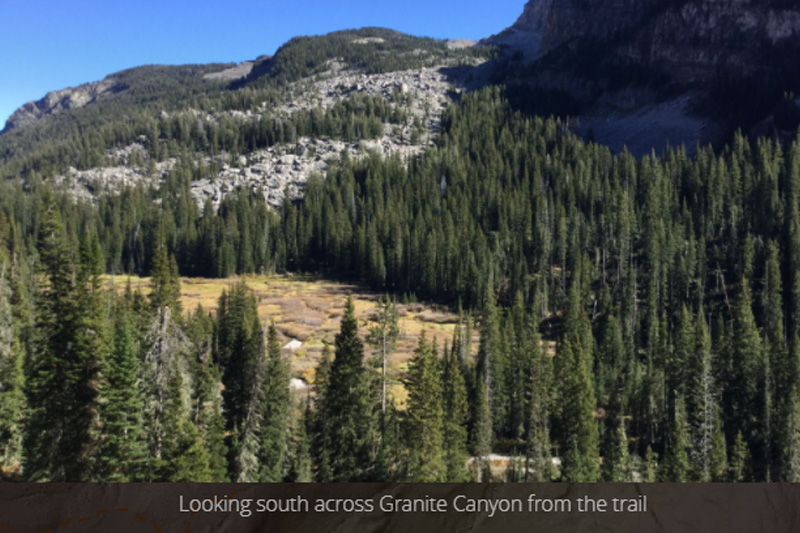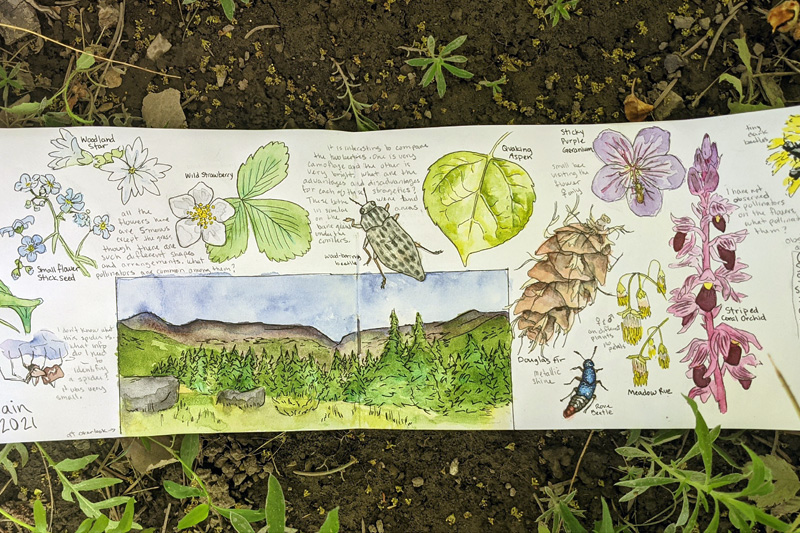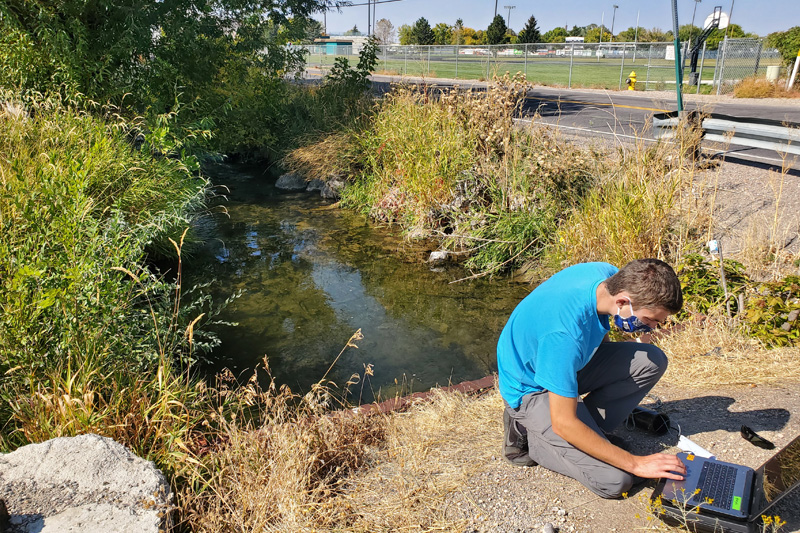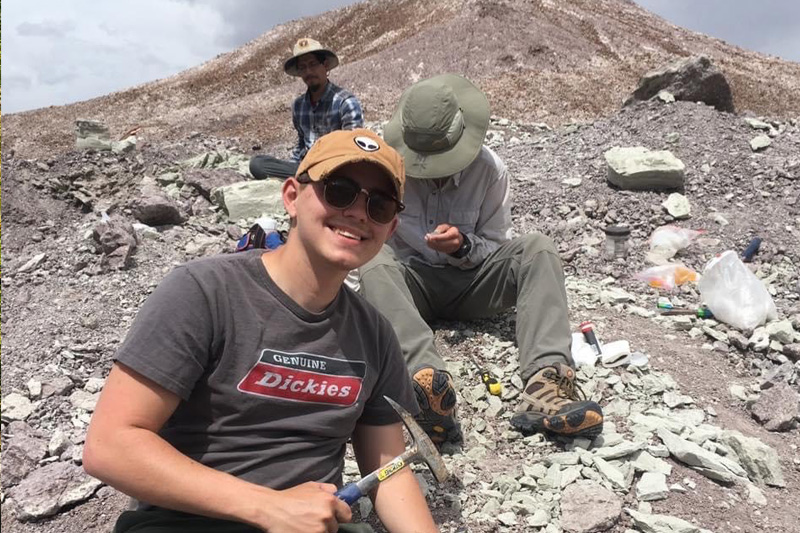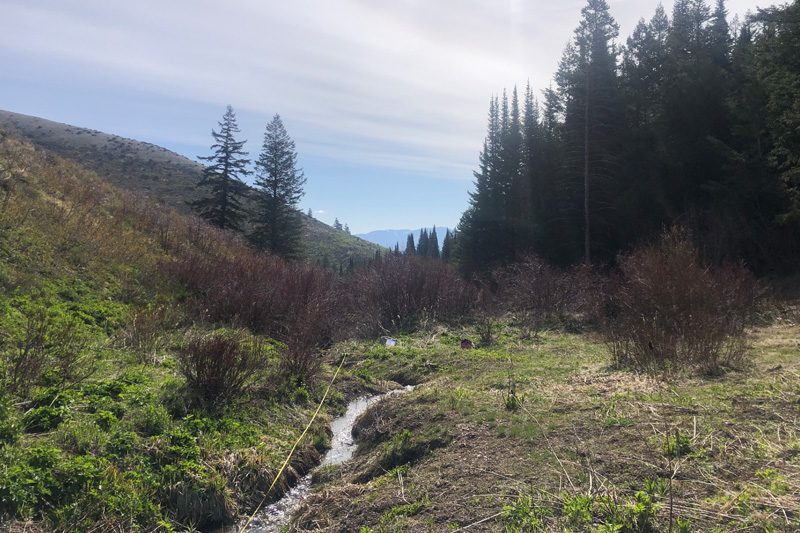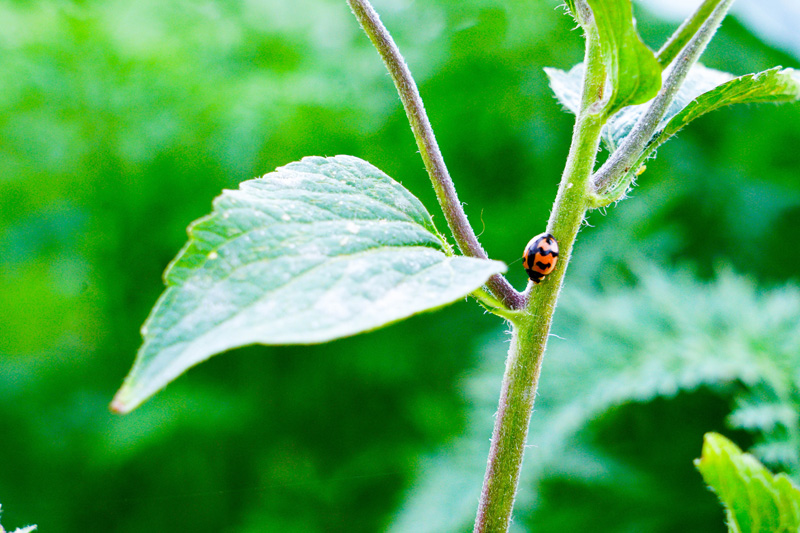Student and Partnership Grants
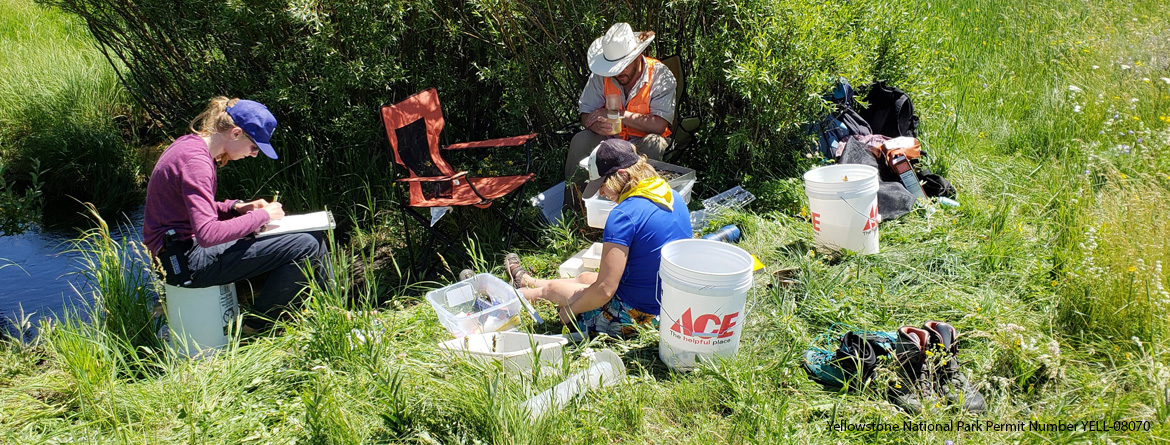
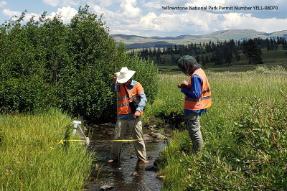
Stream-Riparian Foodwebs in Yellowstone National Park
Jeremy Brooks
Jeremy Brooks is a PhD candidate conducting ecological research with Dr. Colden Baxter for Idaho State University’s Stream Ecology Center. Growing up along the Yellowstone River, Jeremy has always had a love for rivers and their riparian forests. From the birds singing in the cottonwood galleries to the freshly emerged mayflies dancing over the water, his interests lie in the complex, yet meaningful ways the ecosystems of land and water are connected. For the past four years, he and fellow collaborators from ISU and Oregon State University have sought to untangle a particularly nuanced web of connections in Northern Yellowstone National Park.
The question: How has the reintroduction of wolves and restoration of grizzly bears and cougars influenced the streams and riparian ecosystems of Northern Yellowstone?
At this point, the researchers have completed most of their fieldwork and are currently trudging through thousands of samples representing different parts of the ecosystem. These samples will help Jeremy in evaluating various hypotheses, such as restored willows shade and limit stream algae, influence both aquatic and terrestrial insect diversity and productivity, change what the fish are eating and their growth rate, influence the timing and amount of aquatic insect emergence, and change the diversity and abundance of spiders, birds, and bats. If you are interested, be sure to check in with us in the coming months and years, or reach out to Jeremy at jeremybrooks@isu.edu.

Stress in a Dynamic Environment: How Cold-Water Fish Might Cope with Climate Change
Alex Wooding
Alex Wooding is a Master of Science candidate in the Biological Sciences Department at Idaho State University. He received his bachelor’s degree from West Virginia University with a major in wildlife and fisheries resource management. Since that time, he has worked for Colorado Parks and Wildlife and the Wyoming Game and Fish Department working on a variety of fisheries management and native species conservation projects. Alex has always been fascinated with how interactions between an organism and its environment can affect health and behavior. This interest is what led him to pursue a graduate degree in ISU’s Integrative Physiology Laboratory under Dr. Devaleena Pradhan. Here, he is researching how seasonality and environment type might influence the physiological stress response of Idaho’s native redband trout. More specifically, he is researching how redbands that live in desert and montane environments may have differential stress statuses, and how that might impact growth factors and immune function. To do this, he has taken blood samples from redband trout in streams across these two environment types, and is analyzing these samples for hormones like cortisol and growth hormone, as well as antibody concentrations.
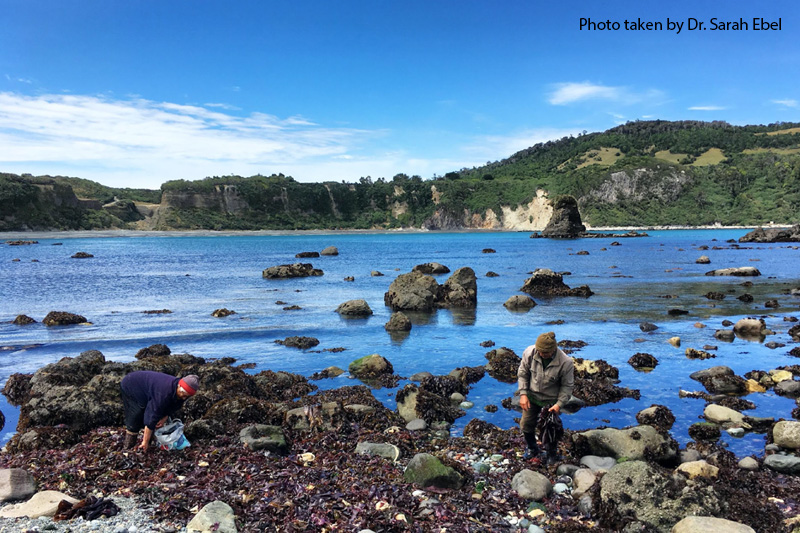
Knowledge Co-Production and Resource Management
Jessica Reynolds
Jessica Reynolds is a master’s student in the Sociology Department at ISU, and holds a bachelor’s of science in Fisheries and Wildlife from the University of Georgia. In the past, Jessica worked in Costa Rica and St. Kitts, West Indies with conservation focused non-profits. As a part of her master’s thesis, she will continue this work with nonprofits by partnering with the Chilean non-profit organization, La Fuerza del Buzo (LFDB), which seeks to secure fishing livelihoods and promote sustainable marine ecosystems in southern Chile’s Lakes Region. In 2021, several divers in the Lakes Region contacted LFDB and identified the need to examine the extent of over-exploitation of “huiro” or Giant kelp (Macrosystis pyrifera), which has economic, social, and ecological importance. The ultimate objective of this project is to identify and address resource users’ research needs in coastal Chile to support LFDB’s program development. Further, to address the challenge of overexploited huiro populations and the social implications linked to strict regulations. Jessica will initiate a knowledge co-production process with marine resource users to identify resource users’ local ecological knowledge of huiro population dynamics and distribution through participatory mapping. This knowledge is related to geographic space; meaning that users ascribe to this resource (i.e. socio-cultural values related to huiro); and how users are affected by, and interact with, socio-ecological change. The information obtained through this research has the potential to reveal a deeper understanding of the relationship users have with this species and the potential to inform management decisions and future research related to huiro. CERE has provided funding for Jessica’s travel to her field sites in southern Chile this coming winter 2021-2022 to conduct interviews with marine resource users.
Harvester Ant Trophic Interactions During Post-Fire Steppe Recovery
Camdon Kay
Wildfire is increasing in frequency and intensity in the American West, and restoration of burned ecosystems is often done through the addition of native seeds. Animals have the potential to impact wildfire restoration in a number of ways. Previous research has focused on potential negative impacts of animals on ecosystem restoration; however, animals may have both negative and positive impacts on restoration, but these have not often been studied together. This project seeks to assess these effects in tandem to determine a net impact on restoration. By adding seeds to a recently burned and adjacent unburned area, we can begin to assess how local ant colonies affect the growth of both native and non-native plant species. We will be conducting plant surveys, ant feeding surveys, and stable isotope analysis to help to answer these questions. Specifically, stable isotope analysis will allow us to assess the diet of the ants. By determining variation between different weights (isotopes) of elements found in ant tissue, we can estimate where they lie in the food chain and what groups of plants they may be feeding on. A better understanding of how ants affect plant communities after fire will help to inform management practices and help to protect our valuable sagebrush steppe ecosystems.
Agricultural Multi Agent Robotic System
Taher Deemyad
Potatoes are one of the most important parts of the human diet, and Potato virus Y (PVY) is one of the common diseases between various types of potatoes. Right now, farmers use the traditional method of detection and removal of PVY by sending specialists to potato fields which, based on the size of a potato field, is not an efficient method. The final goal of this project is to increase the accuracy of detection and the speed of removal of the sick plants from the field. In this project, first a quadcopter which is equipped with a high spectral camera and high precision GPS will fly over the potato field, take lots of images, and find the location of the sick plants from these images. Then, these locations will be sent to a four-wheel drive vehicle, which will navigate it autonomously to the target location. The sick plant will be detected by a robot vision system which is installed on the vehicle and will be completely removed automatically by a customized roguing mechanism from the field and will be carried away for final disposal.
Based on this idea, we designed and built an optimized prototype chassis for AGV that is able to drive through the rough terrain in a potato field. This chassis passed all tests in the field. Also, an advanced navigation system and obstacle avoidance sensor that will be used for an auto-drive were installed and implemented on AGV. For the vision system of this AGV, a customized robot vision system (The CERE grant enabled us to buy high-quality cameras for this part of the project) and a new image processing algorithm was developed and implemented. This image processing algorithm was a completely new idea for detecting plants that we developed during this research. Finally, because at the time of this research, there was not any roguing mechanism available in stores, we designed and implemented a novel roguing mechanism for secure and complete extraction of infected plants from the field without transferring diseases to other healthy plants (provisional patent). The use of this mechanism is not just limited to this project, but can be used for various purposes and has the ability to connect to most agricultural vehicles. In addition, the knowledge and outcomes from this research will be able to not only help scientists design similar systems for protecting farms, but can also be used for other robotic research such as a space exploration project where scientists are facing an unknown environment.
Post-Glacial Evolution of Southern Alaska’s Climate: Insights From Multiproxy Analysis of Lake Sediments
Brad Baxter
This project consists of creating a paleoclimate record for the Matanuska-Susitna Valley of Alaska using biogeochemical proxies of past hydrology that are archived in lake sediments. This record will apply multiple independent proxies that each provide separate perspectives on the lake basin’s hydroclimate in order to better inform climate reconstructions. Characterization of this lake sediment record will mainly rely on stable isotope analysis of both inorganic and organic isotopes of lake sediment as indicators of comparative aridity and nutrient cycling in the basin throughout time. Analysis of fluxes in carbonate mineral production in the lake will be applied as an additional proxy of climate in the lake basin. Climate reconstructions in this study are based on correlations across proxies which indicate significant climate variability, and will be characterized by time-series analysis and the identification of any trends. The record will span the life of the study lake with a likely inception during the deglaciation of the valley in the late Pleistocene Epoch, likewise providing a record of local climate following the deglaciation. Ultimately, the local climate information yielded from the sedimentary isotope record in this study will compare with other records to further characterize the evolution of climate in Southern Alaska following deglaciation.
A Novel Landslide Inventory and Analysis for Grand Teton National Park
Joshua Lingbloom
Josh Lingbloom is pursuing his Master’s in Geology at Idaho State University. He is working with Dr. Benjamin Crosby to create a comprehensive landslide inventory map for Grand Teton National Park (GTNP), Wyoming. Landslide inventories systematically catalog the location and classification of all known mass movements in a given area and serve as a foundational tool for modeling landslide susceptibility and assessing the hazard and risk posed by future events. Lingbloom’s mapping approach pairs detailed field observations collected over the summers of 2020/21 with analysis of aerial imagery and a high-resolution LiDAR (Light Detection and Ranging) topographic dataset. LiDAR imaging is an innovative technology capable of visualizing the bare ground surface, even where obscured by dense vegetation. Furthermore, Lingbloom is applying several geostatistical methods to the inventory to identify patterns in where and where and how landsides occur in the park. Since the Teton Range has wide variations in topography and geology, these statistical findings will also serve to advance our understanding of where and how mass movements occur in other landslide-prone regions.
Lingbloom is also planning to present his findings and educate the public and management community about the different types of landslides that occur in the park through a series of public presentations in Jackson, WY and an ArcGIS StoryMap web portal, hopefully instigating further research into the triggers, history, and risk mitigation of mass movements in the region. A draft of the StoryMap is available here: A Landslide Inventory for Grand Teton National Park
Drawing to Learn: The Sketchy Side of Science
Ashelee Rasmussen
Drawing is a tool that can be used in science education to increase students’ ability to observe and make connections and communicate what was observed. Creation of representation, such as through drawing, enhances students’ ability to acquire and remember information. Drawing can support students becoming more engaged and aware of their own learning and learning process. Although the utility of drawing-to-learn has been described in theory, drawing is rarely incorporated into science education as an explicit mechanism for science learning or as a tool for developing researchers. What remains unknown are the features of effective instructional design for drawing-to-learn. Ashelee is conducting original research dealing with identifying and testing pedagogical tools that create opportunities to learn science through the practice of scientific illustration through a distinctive approach drawing on the theoretical framework of “Professional Vision”.
In Summer 2020, CERE funded a workshop that Ashelee led for educators and researchers to learn and apply illustration techniques to facilitate science learning and research. The workshop successfully met the objectives of providing illustration as a tool for learning to the target audience, receiving positive reviews from participants in both verbal comments and surveys, and representing several entities. Along with CERE, the ISU Department of Biology, Zoo Idaho, and the Idaho Museum of Natural History supported the organization and implementation of the workshop. Participants came from Pocatello, Central Idaho, and Northern Utah, and represented many institutions: public schools, the City of Pocatello, ISU, and USU. Participants were involved in k-12, undergraduate and graduate education, education outreach, and research. They represented diverse fields such as biology, environmental science, and paleontology/geology. Ashelee proposes that this type of learning experience should be a continuing creative strategy for supporting educators and researchers and building long-lasting relationships between ISU and other entities and communities to harbor cross-disciplinary efforts that support science education and research. In alignment with the mission of CERE, the outcomes of these workshops will have direct implications for both education and research in the life sciences.
Longitudinal linkages between nutrients, organic matter, and metabolism in a small urban stream network
Kevin Gauthier
Streams have become recognized as important components of the global carbon cycle due to their capacity to process and transport organic matter. Streams both process organic matter inputs from upstream and the terrestrial landscape, through ecosystem respiration (ER), and produce new organic carbon through photosynthesis (GPP). Estimates of stream ecosystem metabolism vary spatiotemporally and can be driven by variation in light availability to the stream surface, hydrology, organic matter and nutrient supply, or a combination of these and other physical characteristics. The relationships between stream nutrient and organic matter concentrations and stream metabolism are especially challenging to disentangle. GPP is associated with nutrient uptake, but increases in nutrient availability can stimulate GPP and ER. This reciprocal relationship suggests that there may be indirect longitudinal links between the metabolism of different stream reaches.
This project addresses the question: Does the metabolism of an upstream reach alter the downstream transport of nutrients and organic matter enough to drive metabolism downstream?
Despite encompassing <1% of Earth’s surface area, streams contribute substantially to global carbon fluxes and have an outsized role in structuring atmospheric carbon dioxide concentrations. Measuring stream metabolism is a way to quantify this role of streams, but the wide range in metabolism observed across many streams limits the success of attempts to scale up measurements to encompass large geographic areas.B y assessing the relationships between stream nutrient and organic matter concentrations and metabolism in adjacent reaches, this research will provide a new empirically based analytical framework for understanding broad-scale variation in stream metabolism. Ultimately this new understanding will improve our estimates of the role of streams in global carbon cycling, with direct implications for global climate change.
Investigating the shift from sprawling to upright locomotion in Archosauromorpha (Reptilia: Diapsida) and impacts on substrate use and diversification
Xavier Jenkins
Reptiles are the most diverse group of terrestrial vertebrates alive today, inhabiting all seven continents and the world's oceans. Reptiles were even more diverse in the past, and one group in particular, the archosauromorphs, would become the dominant tetrapods for 250 million years and are today represented by turtles, crocodilians, and birds. Jenkins is studying the locomotion and ecologies of the archosauromorphs in order to determine the mechanisms behind their evolutionary success.
The evolution of novel locomotor forms is linked to the diversification of many vertebrate clades. By rearranging and decoupling hindlimb and forelimb locomotor modules, the ancestors of birds freed their forelimbs from regular quadrupedal locomotion and today birds use forelimbs for powered flight. Similarly, the earliest hominids decoupled their forelimbs from locomotion, using their hands to create and use various tools or type on a keyboard as we do now. Jenkins is investigating a similar shift in locomotor modules, the evolution from sprawling, lizard-like locomotion seen in the ancestors of all tetrapods to the upright locomotion seen in archosauromorphs (birds, crocodilians, and turtles) today. By gathering 3D scan data of the earliest archosauromorphs with the Idaho Virtualization Laboratory, he will generate an ecomorphological framework documenting this novel transition yielding insights into how the archosauromorphs became the dominant terrestrial vertebrate clade for the next 250 million years and remain the most specious group of terrestrial vertebrates today. Jenkin’s hypothesizes that increased forelimb dominance resulting from becoming more upright promoted ecological diversity in the Archosauromorpha, allowing novel ways to interact with and traverse a substrate (including burrowing and climbing) and eventually the evolution of bipedality.
Intermittency and Instream Processing: Metabolism as a Control of Dissolved Organic Carbon
Justin Miller
Inland freshwaters account for a small fraction of surface water, but streams and rivers transport and process significant amounts of terrestrial-derived organic. Estimates of stream contributions to global carbon cycling has frequently focused on perennial flowing streams, excluding the approximately 50% of streams that express non perennial flow (Datry et al. 2014). Carbon cycling in intermittent streams is expected to be different than in perennial streams because the fluxes, sources, and instream processing of carbon are all impacted by patterns of drying.
The work will take place in the 25.5-km2 Gibson Jack watershed, the stream of which is about 50% intermittent. This work will empirically determine how spatial and temporal patterns of intermittence affect both transport and processing of dissolved organic carbon, which provides a framework to further our understanding of the role that intermittent streams play in the global carbon cycle.
Additional Student Projects
- Sub and Meta Food Webs in the Middle Fork of the Salmon River: Laura Faurot
- Genetic and Morphometric Tools to Identify Species Diversity of Catostomid Fishess in the Intermountain Western United States: Brandy Smith
- Consequences of Habitat Loss for Vectors of Aquatic-Terrestial Connectivity in the Fort Hall Bottoms: Jade Ortiz
- Pollination Ecology of the Beartooth Plateau in the 21st Century: Troy Tetreault
- Spatial Complexity's Mediation of the Structure and Dynamics of Food Webs Across River-Floodplains: James Paris
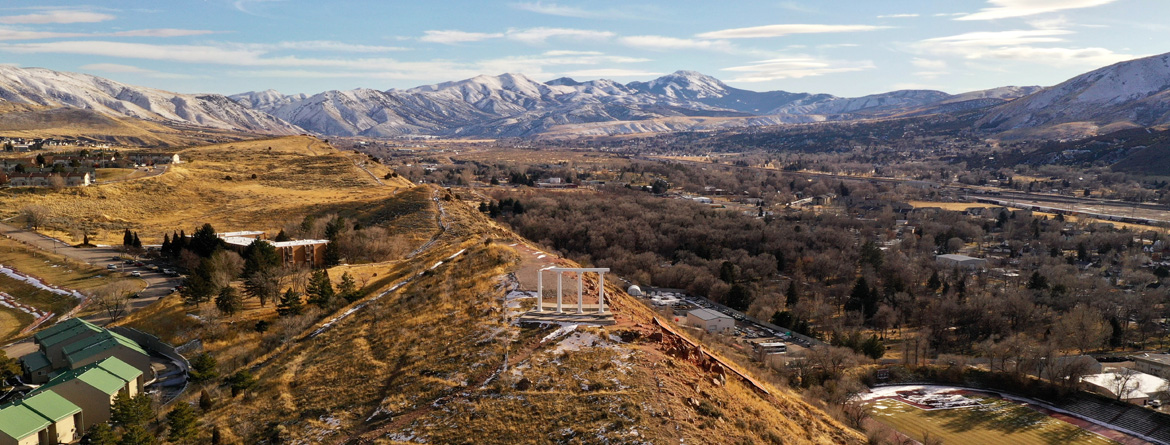
- Open Space Management Intern and Project Facilitator: City of Pocatello
- Initiating a Partnership with the US Fish and Wildlife Service to Measure Riparian Woodlands as Migration Corridors for Neotropical Birds Transiting Idaho: David Delehanty
- Sustainable Idaho Public Radio Show


